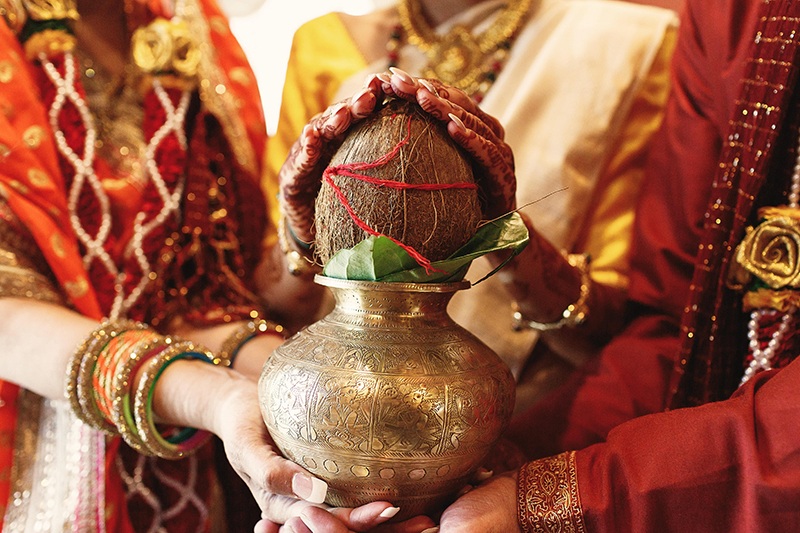In today's fast-paced, ever-evolving society, the question of the "right age" to marry is more relevant than ever. With increasing emphasis on personal freedom, career aspirations, and self-development, people are postponing marriage well into their late 20s or even 30s. At the same time, some cultures and families continue to emphasize early marriage as a cornerstone of a stable and moral life. But is there a universally “right” age to marry?
While many look to modern psychology, sociology, or economics for answers, ancient wisdom offers a deeper, more philosophical approach to this timeless question. One such source is the Bhagavad Gita, the sacred Hindu scripture that forms a part of the Indian epic Mahabharata. Though it doesn’t address marriage directly, the Gita provides profound insights into life’s stages, purpose, and duties—offering a lens through which we can explore the concept of marriage from a spiritual and philosophical perspective.
The Gita and Dharma: Purpose Over Age
The Bhagavad Gita revolves around the concept of dharma, or righteous duty. Lord Krishna counsels the warrior prince Arjuna, emphasizing the importance of performing one's duty according to one's stage in life and intrinsic nature. From this perspective, the “right time” to marry is not a matter of age alone, but of readiness—spiritually, emotionally, and socially.
In Chapter 3, Verse 35, Krishna says:
“It is better to fail in one’s own dharma than to succeed in the dharma of another.”
This verse can be interpreted as an encouragement to embrace one’s own path authentically. If an individual is prepared for the responsibilities of marriage—understanding its spiritual, emotional, and moral dimensions—then that is the right time for them, regardless of age. Conversely, entering into marriage because of societal pressure or age expectations would be like performing someone else’s dharma, which the Gita warns against.
The Four Ashramas: A Traditional Framework
In ancient Hindu philosophy, life is divided into four ashramas or stages:
Brahmacharya (student life)
Grihastha (householder life)
Vanaprastha (retirement/forest-dweller)
Sannyasa (renunciation)
Marriage traditionally falls within the Grihastha ashrama, a stage characterized by fulfilling worldly responsibilities, including raising a family and contributing to society.
But here’s the key: the transition to the Grihastha stage doesn’t happen at a fixed chronological age. It follows the completion of Brahmacharya—the stage of learning, discipline, and preparation. This implies that marriage should follow a certain maturity of mind, not just a number on the calendar. Readiness, according to this model, involves self-awareness, the ability to manage desires, and a commitment to one’s responsibilities.
Emotional Readiness and Inner Stability
The Gita places great emphasis on inner stability. In Chapter 2, Verse 70, Krishna says:
“A person who is not disturbed by the incessant flow of desires—that enter like rivers into the ocean, which is ever being filled but is always still—can alone achieve peace, and not the person who strives to satisfy such desires.”
Applied to marriage, this suggests that one should enter into such a commitment not from a place of neediness or emotional turmoil, but from a place of peace and balance. Marriage, ideally, should not be an escape from loneliness or pressure, but a conscious choice made from a stable and centered mind.
This doesn’t mean waiting for perfection—no one is ever entirely free from desires or perfectly balanced—but striving toward self-awareness and emotional maturity is a crucial part of preparing for marriage.
The Role of Karma and Free Will
One of the most empowering teachings of the Gita is the balance between karma (action) and free will. While some aspects of our life are shaped by past karma, we are not entirely bound by fate. We have the freedom to make conscious choices in alignment with our dharma.
Choosing when to marry is one such decision. Rather than yielding to external timelines—cultural expectations, peer pressure, or even astrological advice—the Gita encourages us to act from inner clarity and responsibility. This means taking stock of one’s own life goals, emotional needs, spiritual orientation, and societal responsibilities before deciding on marriage.
Society vs. Spiritual Growth
Today, many struggle between fulfilling societal expectations and pursuing personal or spiritual growth. The Gita doesn’t advocate renunciation for all. Instead, it teaches that spiritual growth can be integrated into worldly duties—including marriage.
As Krishna tells Arjuna in Chapter 5, Verse 10:
“One who performs duty without attachment, surrendering the results unto the Supreme Lord, is unaffected by sinful action, as the lotus leaf is untouched by water.”
This suggests that a spiritually-inclined individual can marry and raise a family, provided they do so with a spirit of detachment and service. The key is to avoid being consumed by ego, desire, or social comparison. Marriage becomes a spiritual partnership—a form of seva (service) to each other and to society.
So, What Is the “Right Age”?
If we’re seeking a fixed number—25? 30?—the Gita won’t give it to us. But what it does offer is a powerful framework:
Are you emotionally mature?
Do you understand your life goals and purpose?
Are you ready to serve another person with love, patience, and selflessness?
Are you free from excessive attachment, fear, or pressure?
If the answer is “yes,” then it may be your time, regardless of whether you’re 22 or 42.
Conclusion: Marry with Awareness, Not Age
The Bhagavad Gita teaches that life is not about ticking boxes, but about living with consciousness and purpose. The right age to marry is not a societal standard—it is the moment when your mind is ready, your heart is steady, and your purpose is clear.
Marriage, like any sacred duty, should be entered into with mindfulness and devotion. When we align our personal decisions with the deeper truths of dharma, we find not only the right path—but the right time.
